English development for Finland. ZSU Marksman
By the end of the seventies and the beginning of the eighties, the situation on the fronts of a hypothetical war demanded that the troops be equipped as soon as possible with a sufficient number of self-propelled anti-aircraft guns. New combat vehicles had to fight with attack aircraft and attack helicopters of the potential enemy, which have received widespread in recent years. According to some estimates, in the early eighties, NATO forces needed about a thousand ZSUs. Approximately the same number of self-propelled guns could be sold to third countries, also in dire need of such a technique.
Seeing the insufficiently active development of self-propelled anti-aircraft systems, the British company Marconi Electronic Systems (now transformed into several divisions of BAE Systems) began its own project. Since one of the goals of the project was maximum commercial prospects, several basic ideas were laid in it. This use of the best available technologies and technical solutions, as well as versatility. The latter was primarily understood as the creation of a combat module suitable for installation on a large number of basic machines. However, as it turned out later, all efforts to ensure the installation of the tower on different chassis were useless. As a result, serial anti-aircraft artillery towers were mounted on a tank chassis of just one model.
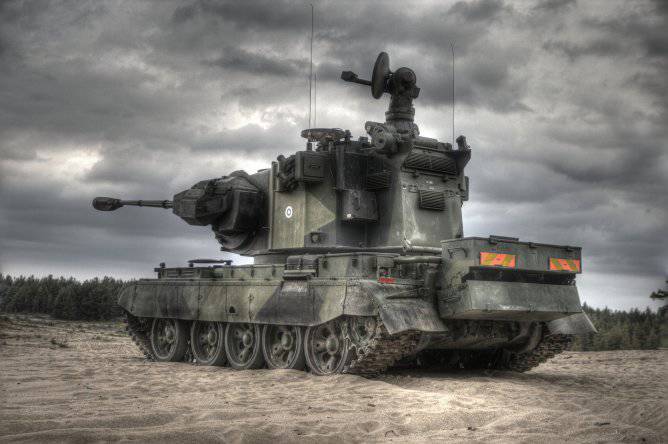
The Marksman project (“Shooter”) started in 1983 year. In determining the technical appearance of a promising ZSU, the following features of the application were taken into account. The anti-aircraft system was supposed to destroy attack aircraft, flying at altitudes of no more than 45-50 meters at a speed of up to 250 meters per second. At that time, similar goals were more difficult for British anti-aircraft missile systems and, therefore, their defeat was assigned to a new ZSU. The required range of destruction of the aircraft was set at three kilometers. The second "typical target" ZSU Marksman made attack helicopters armed with Soviet "Sturm" missiles. The range of attack of helicopters was determined at four kilometers. The specified parameters of the shooting range determined the choice of weapons.
Of all the options available weapons The most effective in the alleged combat situations could show 35 mm KDA automatic guns manufactured by the Swiss company Oerlikon Contraves. It is worth noting that the British company Marconi involved not only Swiss gunsmiths in the Marksman project. Vickers (developed the tower), SAGEM (optical sights and part of electronics), as well as several smaller enterprises took an active part in the creation of the ZSU. In addition, one cannot fail to note the international cooperation associated with the testing of the first prototypes of the Marksman tower. Probably, counting on future contracts, the company Markconi began to create a tower under the shoulder strap with a diameter of 1840 millimeters. The chassis was used to test the first instance of the combat module. tank "Type 59" is made in China. According to the most common version, such a base for an experimental vehicle was chosen in order to optimize all systems for operating on this chassis and then selling a certain amount of ZSU to China or other countries that operated Chinese tanks.
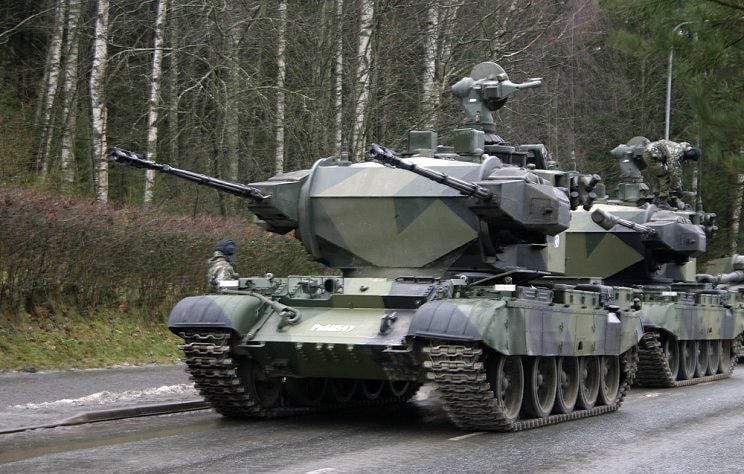
The first prototype based on the tank "Type 59" looked like this. The machine with a combat mass of about 41 tons was equipped with a 620-strong diesel engine. Due to the increase in the weight of the vehicle compared with the base tank, the driving characteristics have fallen markedly.
On a standard tank chase, a large tower of welded structure was located. Unlike the tank chassis, the turret had a relatively weak defense: from 14,5-mm bullets in the frontal projection and from 7,62-mm bullets from the remaining angles. The tower was equipped with a high-speed electric turning mechanism capable of rotating the combat module at speeds up to 90 ° per second. When using automatic guidance systems, the maximum speed of rotation of the turret fell by a third.
On the sides of the front of the tower there were two millimeters of Oerlikon KDA caliber 35 stabilized in two planes (caliber length 90 barrels). Guns with gas automatics could fire at a rate of up to 550 shots per minute each. The electric mechanism made it possible to direct the guns in a vertical plane at speeds up to 60 ° per second. Vertical pickup angles range from -10 ° to + 85 °. The guns were equipped with a hydraulic recoil brake and spring knurling. Of great interest was the cannon ammunition system developed by Oerlikon. KDA guns could receive ribbons with projectiles from two sides, including during one turn. This feature of the guns allowed the use of the original ammunition supply system. Outside the tower, to the side of the breech of each gun was a container for 20 shells 35 x228 mm. Inside the tower were placed two more containers, on 230 shells each. It was assumed that the inner more capacious containers will be equipped with high-explosive fragmentation shells of various types, and the outer ones - with armor-piercing. After the ammunition was used up, the ZSU crew could, on their own, change the empty containers for the loaded ones. To do this, the combat vehicle was equipped with a folding cargo crane.
Marksman self-propelled self-propelled unit could use 35-mm projectiles of several types: fragmentation incendiary (HEI), fragmentation incendiary with tracer (HEI-T), armor-piercing-fragmentation-incendiary with tracer (SAPHEI-T) and armor-piercing subcaliber with tracer (APDS -T) Thanks to the two-way power supply of the guns, the self-propelled gun could fire both fragmentation-incendiary and armor-piercing shells in one queue. The initial velocity of fragmentation shells is about 1175 meters per second. For armor-piercing sub-caliber ammunition, this parameter was significantly higher and reached 1440 m / s. The effective slant range of the target was 4-5 kilometers. The average probability of hitting the target given by the original technical task did not exceed 52-55 percent.
At the back of the roof of the Marksman ZSU tower was the antenna of the Marconi 400MX radar monitoring and tracking station. In the environment survey mode, the radar could find targets at ranges up to 12 kilometers. When switching to tracking, the maximum action distance was reduced to 10 km. The use of a single radar for review and for tracking targets has a corresponding impact on the capabilities of the entire complex. After taking a target for auto tracking, the radar station could not continue to view the space. In the stowed position, the radar antenna column was folded back.
The fire control system was based on a digital computer designed to track targets and develop commands for the guidance drives. In order to improve the accuracy of shooting, the OMS received data from several sensors. When calculating the pointing angles of the guns, the movement parameters of the machine itself (determined by the gyroscopic weapon stabilizer system), wind speed and direction (information came from the sensors on the turret roof), as well as the actual initial velocity of the projectiles (measured with a special gun muzzle). With the use of appropriate projectile masses, the Marksman machine could program fuses to explode at a certain distance from the gun.
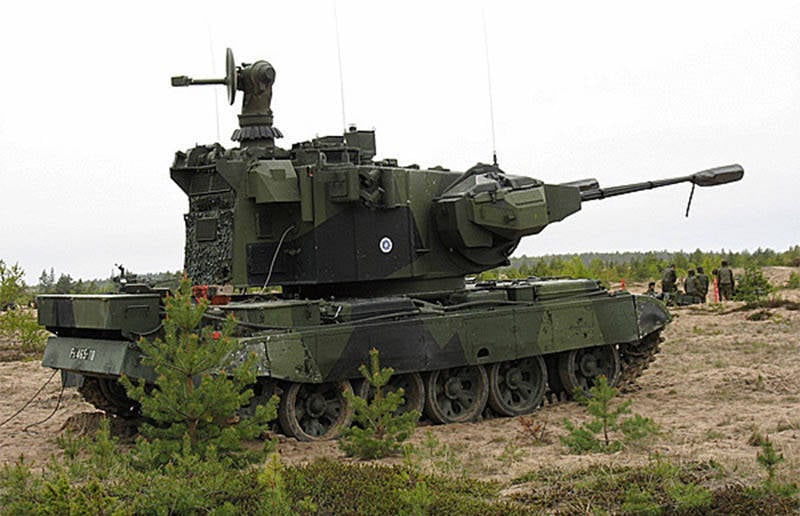
Inside the Marksman tower there were only two crew jobs - the commander and the gunner operator. The third crew member, a driver, was housed in a tank chassis. The crew could turn on the automatic mode of operation of the JMA, associated systems and weapons. In this case, the electronic equipment of anti-aircraft self-propelled guns independently found targets, determined the necessary guidance angles and parameters for blasting projectiles. The gunner or the commander could only give the command to open fire. When the fire control system was turned off, the crew could independently direct guns using the appropriate controls. To ensure acceptable shooting accuracy, the commander and the gunner each had a SAGEM VS-580 VISAA periscope sight. With the stabilization system of the sights off, it was possible to observe the situation or the targets with an increase in x1 and x8. The included stabilizer provided an increase to x10. The laser rangefinder PRF with a maximum range of 8 kilometers was integrated into the gunner's sight. The fire control system and sights could be customized by the customer.
Despite the fact that the Marksman ZSU was designed with the installation on the chassis, like the T-55 or 59 type, already in 1984, other versions of experimental machines began to appear. Employees of Marconi and related organizations installed a turret with anti-aircraft guns on tanks Centurion, Chieftain and Challenger 1. Since not all tanks had a shoulder strap diameter equal to this parameter of the “59 Type” tank, several adapter adapters were created to equip them with the Marksman turret. They were a ring-shaped parts of a complex profile, allowing the tower to be installed on any suitable chassis. In almost all variants of installing the Marksman turret on different tank chassis, it was supposed to use such adapters.
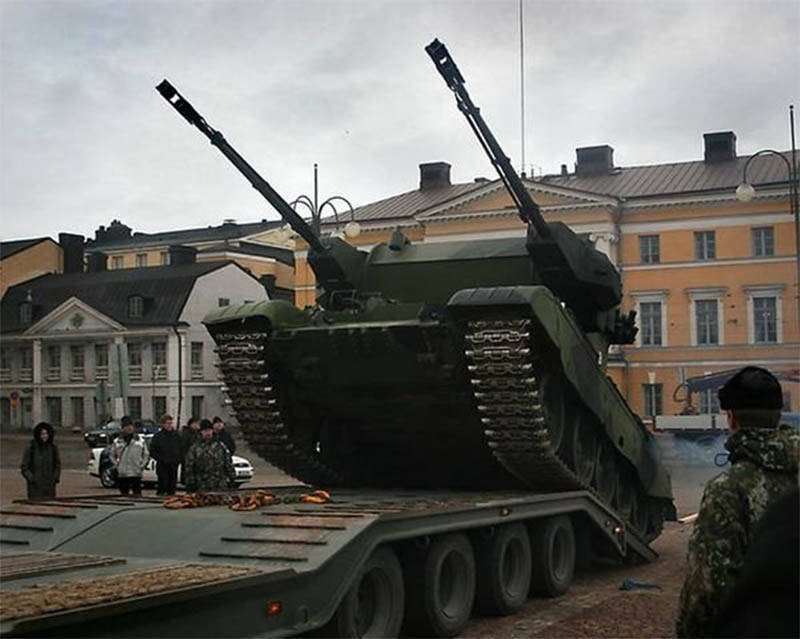
Thanks to the use of adapter adapters, we were able to significantly expand the list of potential chassis for Marksman ZSU. In addition to self-propelled self-propelled guns based on British and Soviet / Chinese tanks, customers were offered similar combat vehicles based on the German Leopard 1 tank, the American M48 Patton, the British Vickers Mk3, and the South African SAX G6. However, all these options ZSU remained on paper. Only vehicles based on the “Type 59”, Centurion, Chieftain and Challenger 1 tanks participated in the tests.
A large number of proposed options did not affect the real prospects of the new ZSU. As already mentioned, only one option came in handy, based on the tank Type 59 / T-55. The proposed main customer, represented by the armed forces of Great Britain, was not interested in the project. Already in the mid-eighties in the armament of the leading countries, a large number of aircraft armament appeared, capable of effectively destroying such anti-aircraft complexes. The use of only artillery weapons did not suit the British. As for other potential customers, the rupture of relations with China, financial problems of third countries, as well as insufficient characteristics of self-propelled self-propelled guns almost left the consortium led by Marconi without orders.
Shortly after the first shows of the Marksman ZSU at the exhibitions of weapons and military equipment, in the second half of the eighties, the commanders of the army of Finland became interested in it. A relatively large number of Soviet T-55 tanks remained in service with this country, which would soon have to be written off and disposed of. Wanting to save on recycling and keep a decent, but already outdated technique, the Finnish military signed a contract with British industrialists in 1990. In accordance with this agreement, Marconi delivered to the customer seven Marksman towers intended for installation on the T-55 / “Type-59” tank chassis. In the Finnish army, the converted machines received a new name - Ilmatorjuntapanssarivaunu 90 Marksman (“Anti-aircraft tank-90” Marksman) or ItPsv 90. Finnish "anti-aircraft tanks" were used in the army for two decades. In 2010, all the existing ItPsv 90 machines were deposited, where they are still located. By the end of the decade it is planned to remove them from service and dispose of them.
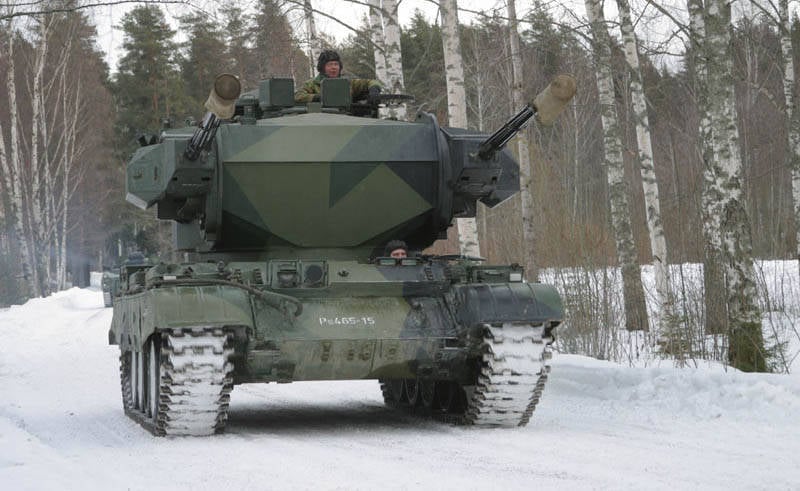
In general, the English project Marksman can be assessed as unsuccessful. Moreover, the lack of noticeable results in the field of sales (a total of seven production towers manufactured for Finland) was due to the concept of the combat vehicle itself. Already in the early eighties, when the appearance of a promising ZSU was only determined, in a number of countries there were not only projects, but also prototypes of aviation weapons capable of destroying anti-aircraft artillery without entering its area of operation. Such aircraft rockets and bombs went into the series at about the same time as Marconi built the first prototype self-propelled self-propelled gun based on a Chinese tank. It was the inconsistency of the Marksman ZSU to modern requirements that caused the failure of the entire project. As for the contract with Finland, the supply of only seven towers makes us recall the proverb about the sweetened pill. In addition, we should not forget the military activity of the Finnish self-defense forces: Finland has not been involved in major conflicts for a long time, and therefore all seven Anti-aircraft tanks, most likely, will wait until the end of the decade and will be recycled, having managed to participate in only a few exercises.
On the materials of the sites:
http://army-guide.com/
http://rombred.com/
http://vestnik-rm.ru/
http://strangernn.livejournal.com/
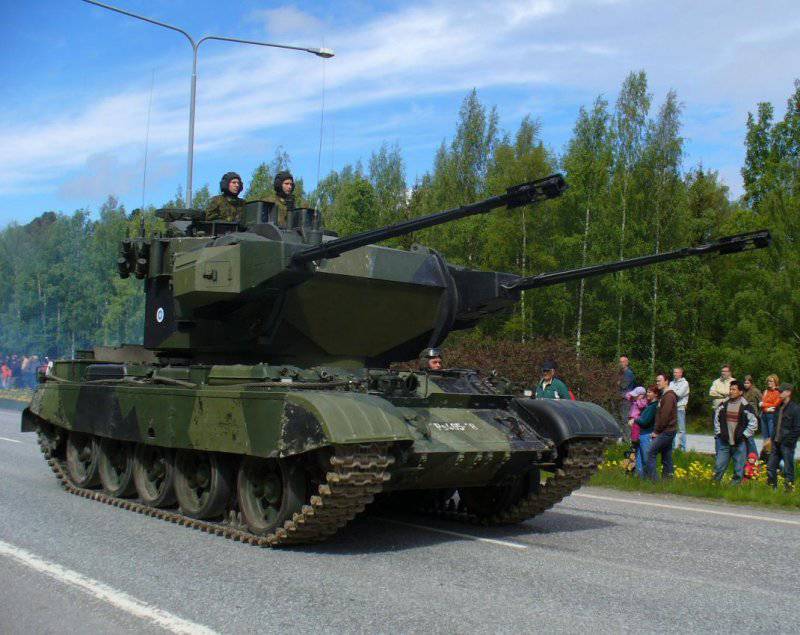
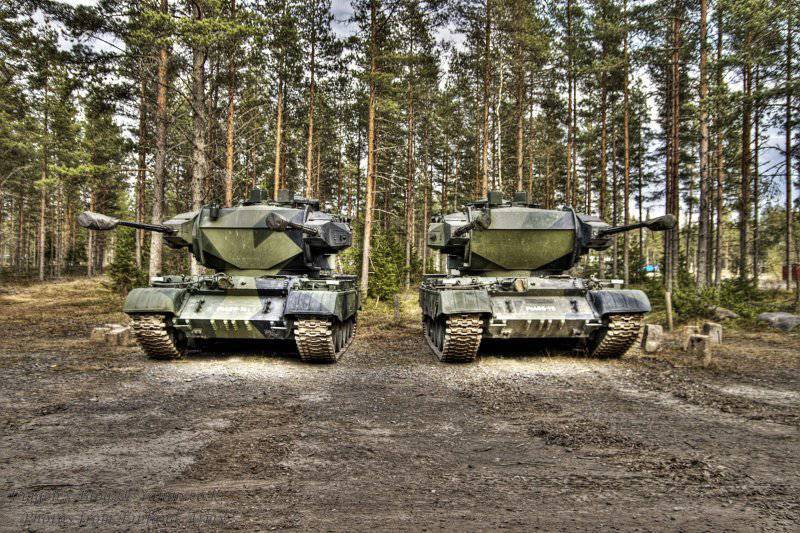
Information